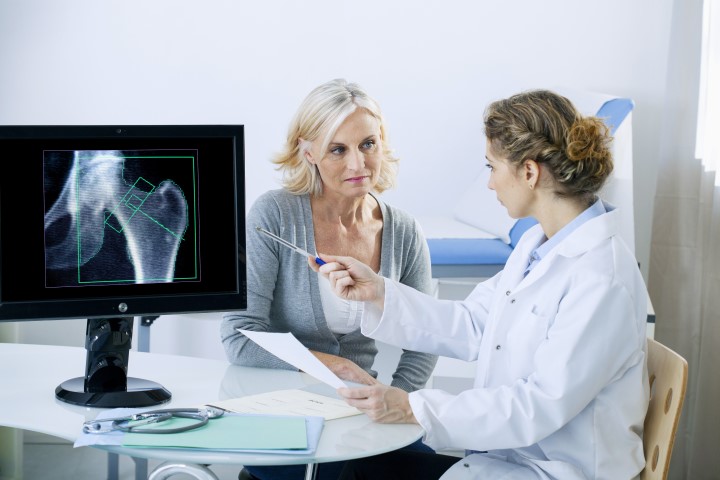Menopause is something that affects all women, but that doesn’t mean it affects all women the same way. During menopause, women may experience a lot of changes. Menopause is a gradual process that is typically broken down into three stages: perimenopause, menopause and post-menopause. Each of the three stages brings with it different physical and emotional changes to a woman’s body. While we normally associate menopause with changes related to ovulation and reproductive health, it has also been linked to other serious medical issues including osteoporosis.
During menopause, the body’s production of estrogen, a hormone directly tied to bone density, slows down drastically. This lack of estrogen triggers a period of bone loss in many women that generally starts approximately one year before the final menstrual period and can last up to five years. This is why women are far more likely than men of the same age to develop osteoporosis. The most rapid bone loss occurs during the perimenopausal and menopausal periods.
Osteoporosis is often referred to as a “silent disease” because its symptoms do not necessarily present themselves as you develop the condition. It’s common for people with osteoporosis to not even be aware of their condition until their bones become so weak that a seemingly minor bump or fall causes a fracture. Osteoporosis can also lead to collapsed vertebrae that may initially seem like ordinary back pain, but can result in loss of height or spinal deformities.
The longer a woman’s estrogen levels stay depleted, the more bone mass she may lose. This makes women who experience early menopause (before age 40) especially susceptible to osteoporosis. Women who have gone an extended time without having a menstrual period or experience irregular periods may also be extra vulnerable.
There are measures women can take to keep their bones healthy and strong as they age and go through the stages of menopause. Regular exercise like walking is highly recommended. Consuming food and drinks that are rich in nutrients like calcium and vitamin D can help keep your bones strong as well.
Treatment options for osteoporosis usually include medications and supplements designed to restore bone density. Hormone replacement therapy uses estrogen supplements to replace the estrogen lost after menopause in an effort to maintain bone mass and health. Vitamin D and calcium supplements can also be taken as part of osteoporosis treatment. Drugs like Forteo or Prolia are also commonly prescribed to try to prevent further bone loss. Physical therapy and regular weight-bearing exercise that maintain muscle tone and joint health can help to strengthen bones and even reduce or prevent further bone loss.
Regardless of which phase of menopause you are currently in, a checkup to test for the presence of bone depletion is never a bad idea. At Gynecology Associates of Gwinnett, we’ll start by discussing your reproductive health history and administering a bone mineral density (BMD) test to gain the information we need about a patient’s bone health, genetics, and early menopause to catch potential osteoporosis before problems arise. To schedule a consultation, contact Dr. Kristine Gould and Gynecology Associates of Gwinnett today at (678) 380-1980.


